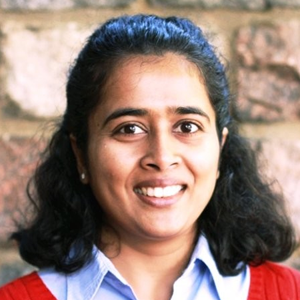Growing a chapter for grad students and postdocs
It took a village to develop and grow a graduate student and postdoc chapter of the American Society of Biochemistry and Molecular Biology at Pennsylvania State University. From the ASBMB membership director to Penn State faculty to grad students and postdocs, everyone involved in the genesis of this unique chapter shared the same goal: improving the scientific and personal lives of graduate students and postdocs at Penn State.
Melanie McReynolds, assistant professor and chair in biochemistry and molecular biology at Penn State, said she wanted to start the chapter to provide something she found lacking early in her career.
“Throughout my scientific journey, I have found different chapters, postdoc initiatives often miss out on building a scientific community nurturing one’s professional and personal goals in life,” she said.
McReynolds asked herself some questions: How do we target these early career scientists? How do we ensure that everyone gets access to resources like travel grants and fellowships? How do we get them to stay and advance in science from the time they are in their graduate lab or postdocs lab, or when they move into academia or industry?
A new kind of chapter
Thinking about these questions and brainstorming with the the ASBMB membership committee, graduate students and postdocs resulted in the notion of starting an ASBMB graduate student and postdoc chapter at Penn State, with the core idea of building and growing the new chapter based on the needs, experiences and suggestions of the members.
“In 2023 I did a survey at Penn State with the students in my department to understand what they thought ASBMB was and how they can benefit from it,” McReynolds said. “The survey went well. Considering the survey findings and the needs of graduate students and postdocs, with the help of leadership at ASBMB, we launched this pilot chapter.”
This chapter is one of the first in the country for grad students and postdocs. It is run by a committee of students and postdocs guided by McReynolds and ASBMB leadership. The objectives are to create community, establish connections with professional ASBMB members in academia or industry and offer visibility to grad students and postdocs. Organizers want to provide opportunities to postdocs and grad students, especially those who are about to graduate or finish their fellowships and are looking for an industry or faculty position, by highlighting their work through ASBMB.
The chapter committee knew what they wanted to achieve, but going about it was tricky. What kind of activities would provide such exposure? How can one build a community of peers to help each other with applications or support? How would they bring together people across campuses and departments and include alumni?
The chapter president, Alexandria Murphy, a second-year Ph.D. student, explains their process.
“We formed a board of six people,” she said. “Four are graduate students, one postdoc and one faculty. We included all possible representations to make sure we are hearing everybody's voice. We started organizing coffee hours where everyone can chat or rant about how things are going in their life and lab.”
The events attracted 30 or more people, Murphy said, and they had plenty to talk about — everything from grant writing and building application packages to child care.
“This chapter is a great way of networking and building connections,” she said. “I love the idea of us all being able to help each other and grow in this space.”
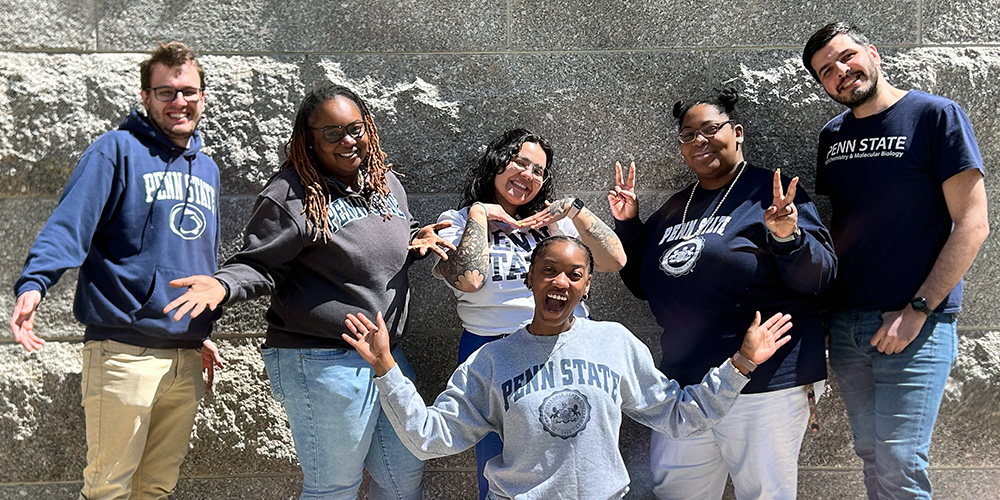
Growing connections
The board is working to organize talks and symposiums with the help of ASBMB leadership and Penn State alumni. They plan to organize small symposiums so they can practice presenting their work and gain exposure while also having ASBMB members come to talk to the chapter.
“As the chapter advisor, I offer the resources for students to network,” McReynolds said. “One of my main initiatives is to bring alumni from all different aspects of government, academia and industry back here with career development workshops.”
She wants chapter members to see what their career options are and what skills and training they need for all the available science careers.
The chapter aims to offer exposure and access to resources and to build a unique science community without the pressures of being around PIs and labs. The goal is to create a place where graduate students and postdocs can feel free of stress and fear to nurture their science and their careers.
Joanna Kotloski, the ASBMB membership director, remembers the need for such a community.
“It can be very lonely going through grad school,” she said. “Having a sense of community among your peers while you are all going through the strenuous experience that is grad school or postdoc is helpful as everyone is doing research. You can help each other along and feel comfortable just by popping into their lab and saying, ‘I do not know why this is not working. What is your take on it?’”
The chapter’s goal is to provide opportunities for leadership, networking and building community. ASBMB will offer grants for travel, networking and other resources.
“While we want to retain and expand our membership,” Kotloski said, “we also want our members to develop their local little ecosystem for inspiring and advancing the careers of other members who are at that crucial career transition stage.”
How it helps
Florian Fekete, a fifth-year international grad student from Hungary, worked with McReynolds to gauge interest and help set up the chapter. Now that the chapter is officially up and running, he is the secretary and event planner for this academic year.
“Being part of this chapter has benefited me in multiple ways,” Fekete said. “Being involved in helping to establish the chapter was a fun experience. I think it will be a great resource for students and postdocs in our program.”
Fekete was the first recipient of the ASBMB Grad Student and Postdoc Chapter Travel Award, which helped him cover the costs of traveling to the society’s annual meeting in April. “I was able to talk about my work, learn about a lot of interesting science and expand my professional network,” he said.
Tamra Mbeuh Lahom Lot is the chapter’s postdoctoral representative. Tamra Lahom said she jumped at the chance to help build this pilot chapter because, given the transience of their jobs, postdocs get left out of many opportunities.
“My entire goal of being the postdoctoral representative is to make sure that we are heard, and as postdocs, we do not miss out on networking opportunities or mentorship experience,” Tamra Lahom said. “It is very easy to only target grad students, but postdocs are at a different stage in their lives. Some of us are married, and a lot of us have kids. We are also trying to prepare for the next stage in our career.”
As a part of this chapter, she collaborated with other postdocs to organize events focused on understanding the tenure track interview process and grant writing. A goal is to provide opportunities for postdocs to mentor graduate and undergraduate students.
“I am hoping that in the future we complete the mentoring tree where faculties and staff mentor postdocs, postdocs mentor graduate students, graduate students mentor juniors or undergraduates,” she said.
This ASBMB Penn State chapter is also trying to reach other university-affiliated student and postdoc communities to make members aware of the support and resources they have for professional development.
For information on forming a graduate student and postdoc chapter at your institution, contact Joanna Kotlostki at jkotloski@asbmb.org
Enjoy reading ASBMB Today?
Become a member to receive the print edition four times a year and the digital edition monthly.
Learn moreFeatured jobs
from the ASBMB career center
Get the latest from ASBMB Today
Enter your email address, and we’ll send you a weekly email with recent articles, interviews and more.
Latest in Careers
Careers highlights or most popular articles

Inside industry postdocs
As more Ph.D. scientists look beyond academia, industry postdocs offer a new kind of training, where mentorship meets mission-driven research. Fellows at Pfizer and Genentech share how these programs prepare them to translate discovery into impact.
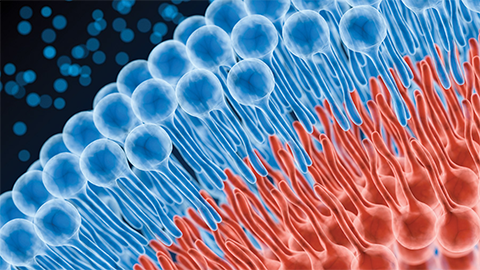
Upcoming opportunities
The Lipid Research Division Seminar Series returns Oct. 15 with talks on recent advances in triglyceride cycling in adipocytes.

Writing with AI turns chaos into clarity
Associate professor shares how generative AI, used as a creative whiteboard, helps scientists refine ideas, structure complexity and sharpen clarity — transforming the messy process of discovery into compelling science writing.

Upcoming opportunities
Register for the free ASBMB webinar on the power of "Yes" and knowing when to use it, coming up on Sept. 30!
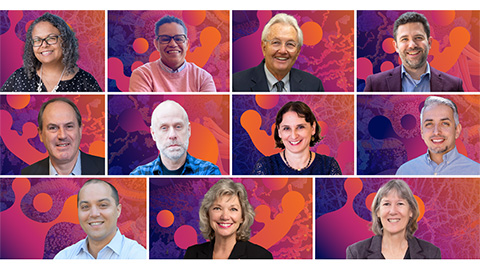
ASBMB names 2026 award winners
Check out their lectures at the annual meeting in March in the Washington, D.C., metro area.
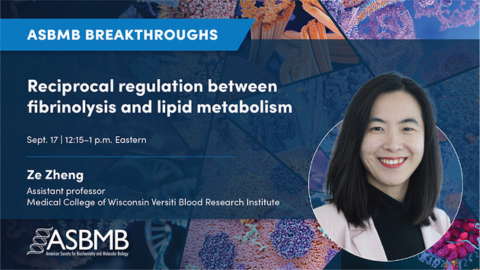
Upcoming opportunities
Register for the free ASBMB Breakthroughs webinar on lipid metabolism, coming up on Sept. 17!

